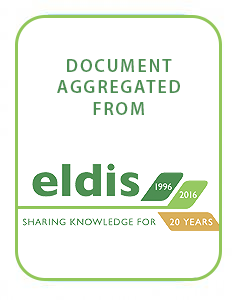Resource information
Paper defines a strategy for forest sector development, and translates it for practical application. In response to the causes of deforestation and desertification, which are rooted in a complex web of socio-economic factors (both inside and, mainly, outside the forests) these guidelines are centred on the needs of people living in and making a living from forests. Sustainable forest management is based on economic, environmental, social and cultural criteria and indicators. Forest programmes and projects will not be sustainable if they do not, for example, consider the broader pattern of land use, address questions of land tenure and access to land, find a balance between economic needs and conservation of biodiversity and give maximum responsibility and benefits to those who live in and make a living from the forests. These objectives cannot be achieved without supporting developing countries in the creation of the necessary policy, legal and institutional environment. In support of this approach, the guidelines contain some newly-conceived and innovative elements. With regard to the social aspect of sustainability, a consistent module for Social Impact Analysis is available. The Commission is now among the first donors to provide a complete tool box for impact analysis, together with the updated guidelines for Environmental Appraisal in the forest sector (contained in these guidelines) and the manual on Financial and Economic Analysis of projects.Part I outlines, for a wide audience, the strategic approach of the European Community to Forest Sector Development Co-operation by setting the scene, introducing general principles valid for all types of interventions and defining themes for support to developing countries. It is accompanied by a diskette providing checklists and working materials for use by target groups.Part II addresses the needs of those dealing directly with EC forest programmes and projects. It provides checklists and support material within a three-dimensional matrix, combining thematic areas with the phases in the Project Cycle and selected factors for sustainability. The final parts of Volume II provide standardised Terms of Reference for different studies and detailed guides for Environmental Appraisal, including Environmental Impact Assessment (EIA), and Social Impact Analysis (SIA).[author]


